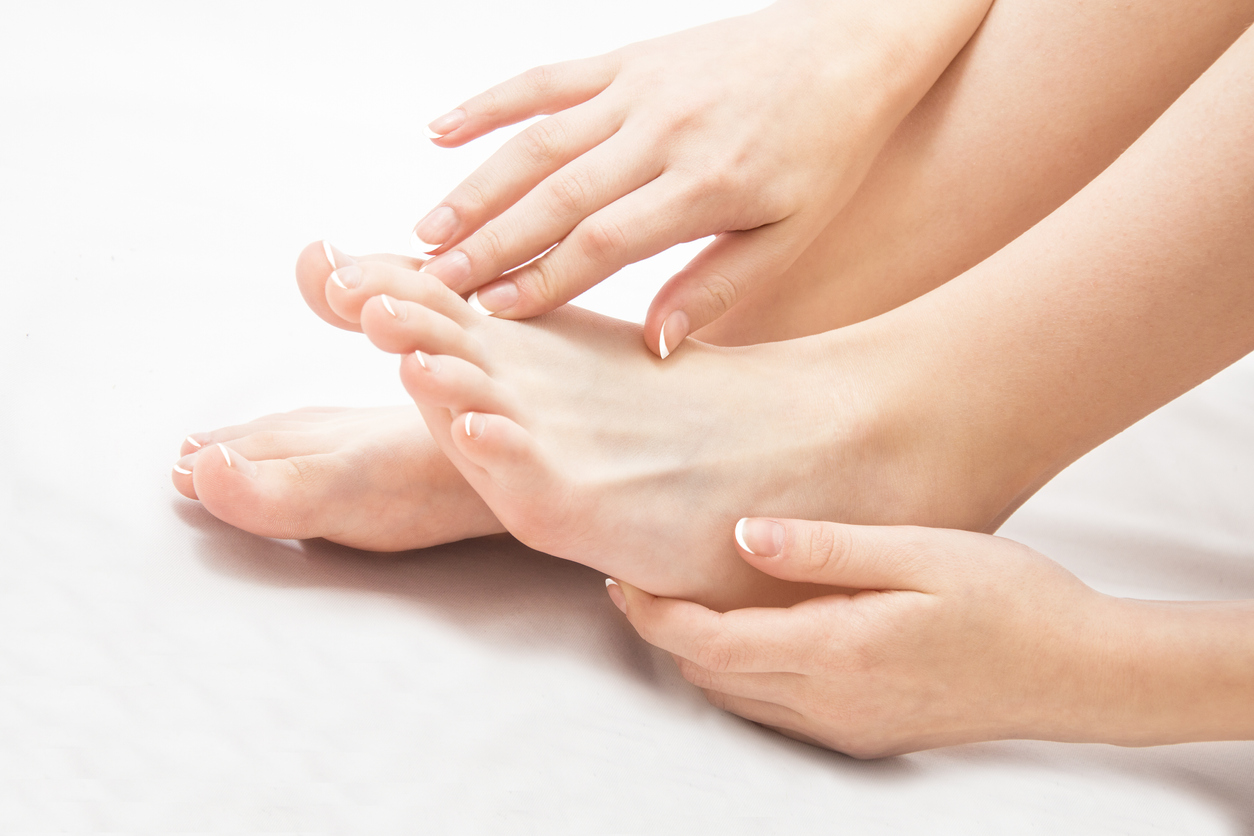
If you have diabetes, foot problems are likely something that you are very familiar with. They can be painful, and the pain is often caused by nerve damage, infections, or poor blood circulation.
If you have diabetic foot and it is not treated quickly, it can lead to serious complications. Let’s talk about some of the most common and most effective treatments for diabetic foot pain.
Diabetic Foot Treatments
The treatment your doctor prescribes will depend on the exact source and severity of your foot problem, and the physician will discuss the appropriate treatment options with you. Nonsurgical treatments for diabetes-related foot problems may include:
- Splinting, casting, or bracing to correct bone deformities
- Footwear to provide structure and to improve blood circulation, such as a customized walking boot
- Medications for infections and skin ulcers
- Wound care (cleaning and dressing wounds)
- Close observation to check for deterioration and progression of the condition
Surgical Treatment
Surgery may be required to resolve advanced skin ulcers and to remove decaying or dead tissue in the foot. In extreme cases, surgical amputation of the toes, foot, or leg may be required to prevent further health problems and to prevent a life-threatening infection from developing.
The condition Charcot foot (described below) may require surgery to stabilize the foot and to repair damage within the foot structure due to neuropathy. Surgery may be the only solution if the foot deformity is too severe for a brace or shoe to fix.
Preventing Diabetic Foot Pain
It is important for diabetics to keep foot problems at bay by always:
- Monitoring their blood glucose levels carefully
- Eating a balanced diet
- Exercising regularly
- Giving up smoking
- Seeing their physician routinely to avoid foot conditions
Diabetic foot can quickly deteriorate and, in severe cases, can lead to hospitalization and possible amputation of the foot or leg if left untreated. It is very important to inspect your feet daily.
If you experience pain, abnormalities, cuts, blisters, redness, inflammation, or nail problems, then contact your physician as soon as possible. Medical attention can help prevent a more serious complication from developing.
Types of Foot Problems with Diabetes
Diabetic foot can result in ulcers (sores), deformities, and trauma to the feet. Common diabetic conditions that affect the feet include the following:
Peripheral vascular disease is a diabetes-related circulation disorder whereby fatty deposits cause blockages in the blood vessels, resulting in reduced blood flow to the limbs – primarily the feet. The delivery of oxygen and nutrients (required for natural wound repair by the body) therefore becomes restricted. Reduced blood flow can lead to problems such as ulcers, infections, and pain, which may heal slowly or poorly and lead to more serious conditions.
Peripheral Neuropathy is a condition in which nerve function deteriorates in the limbs, especially with diabetes. This can lead to a gradual loss of feeling and numbness in the hands, arms, legs, and feet. It can therefore prevent you from feeling pain (which is what enables you to know when something is wrong) and can mean foot injuries/conditions can go undetected.
Charcot foot is a condition that causes the foot muscles, ligaments, and joints to degenerate or break down. Without this proper support and joint stability, the foot can become deformed and unstable, making walking difficult and painful. Inflammation and pressure can cause bone dislocation, and the arch in the foot can collapse.
Diagnosis of Diabetic Foot
If you have diabetic foot pain, your physician will ask you about your symptoms and will perform a physical examination to diagnose the problem. The doctor may also carry out diagnostic testing to help diagnose or check the progression of your condition.
Testing is individualized depending on the symptoms and examination results, but can include:
- Noninvasive vascular tests – To test blood circulation in your feet
- Sensitivity testing – To determine the degree of sensation in the foot
- Imaging tests – To identify fractures, degeneration, and deformities
- Angiography – To see the condition of the blood vessels in the legs and feet
- Bone scan – To identify bone abnormalities
- Wound classification – To grade the progression of diabetic-related ulcers
Orthopedists for Treating Foot Pain in North Dakota
If you are suffering with diabetic foot pain or any other joint pain, contact The Bone & Joint Center. Our expert medical team has substantial experience at diagnosing and treating all types of orthopedic conditions, and we specialize in all aspects of surgical and nonsurgical care.
We treat patients at a number of convenient locations throughout the state. If you have any questions about our services or would like to schedule an appointment, call our office today at (800) 424-2663 or fill out our appointment request form online now to get started. We look forward to serving you.

